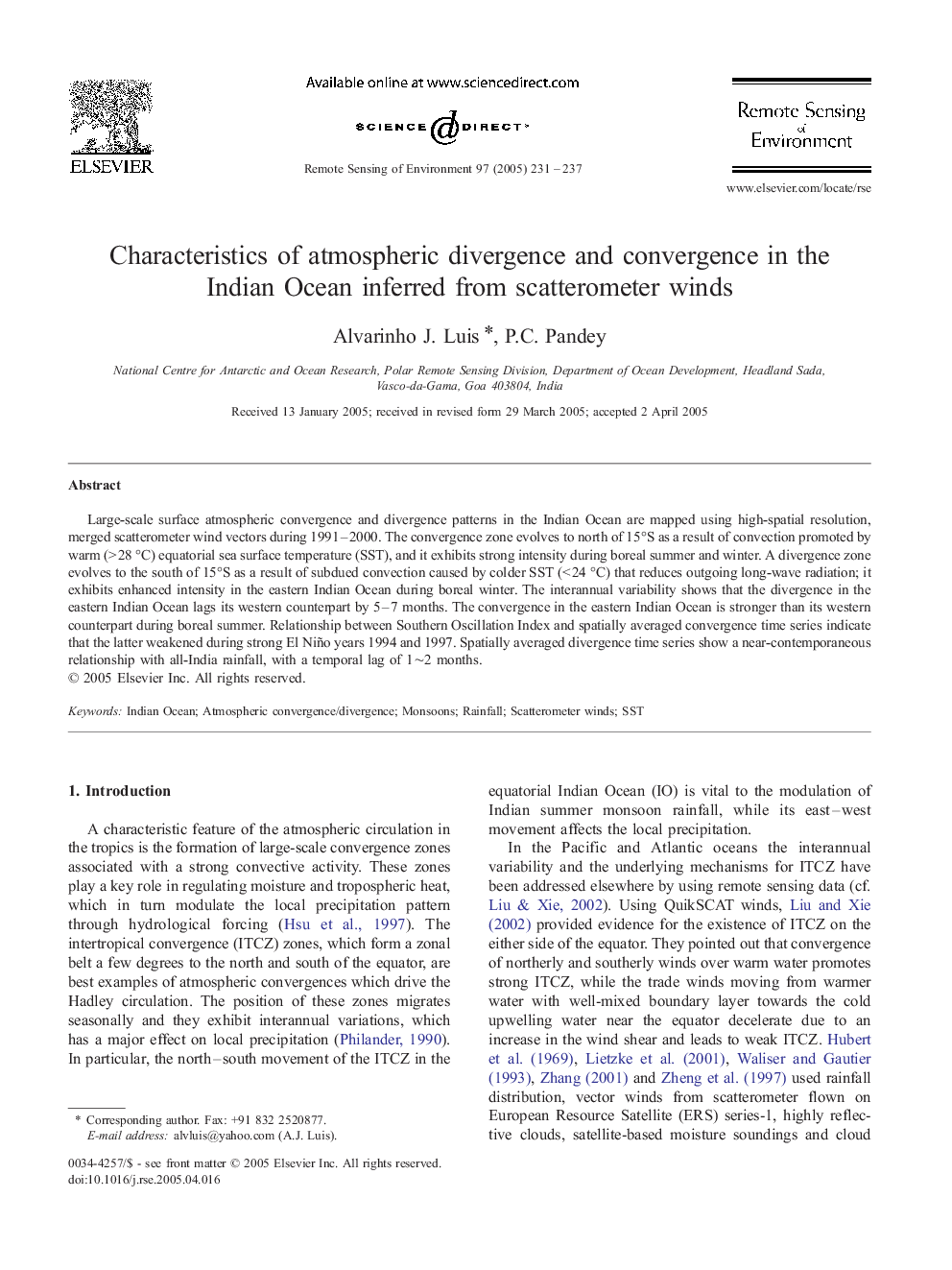| Article ID | Journal | Published Year | Pages | File Type |
|---|---|---|---|---|
| 10114162 | Remote Sensing of Environment | 2005 | 7 Pages |
Abstract
Large-scale surface atmospheric convergence and divergence patterns in the Indian Ocean are mapped using high-spatial resolution, merged scatterometer wind vectors during 1991-2000. The convergence zone evolves to north of 15°S as a result of convection promoted by warm (> 28 °C) equatorial sea surface temperature (SST), and it exhibits strong intensity during boreal summer and winter. A divergence zone evolves to the south of 15°S as a result of subdued convection caused by colder SST (< 24 °C) that reduces outgoing long-wave radiation; it exhibits enhanced intensity in the eastern Indian Ocean during boreal winter. The interannual variability shows that the divergence in the eastern Indian Ocean lags its western counterpart by 5-7 months. The convergence in the eastern Indian Ocean is stronger than its western counterpart during boreal summer. Relationship between Southern Oscillation Index and spatially averaged convergence time series indicate that the latter weakened during strong El Niño years 1994 and 1997. Spatially averaged divergence time series show a near-contemporaneous relationship with all-India rainfall, with a temporal lag of 1â¼2 months.
Keywords
Related Topics
Physical Sciences and Engineering
Earth and Planetary Sciences
Computers in Earth Sciences
Authors
Alvarinho J. Luis, P.C. Pandey,
